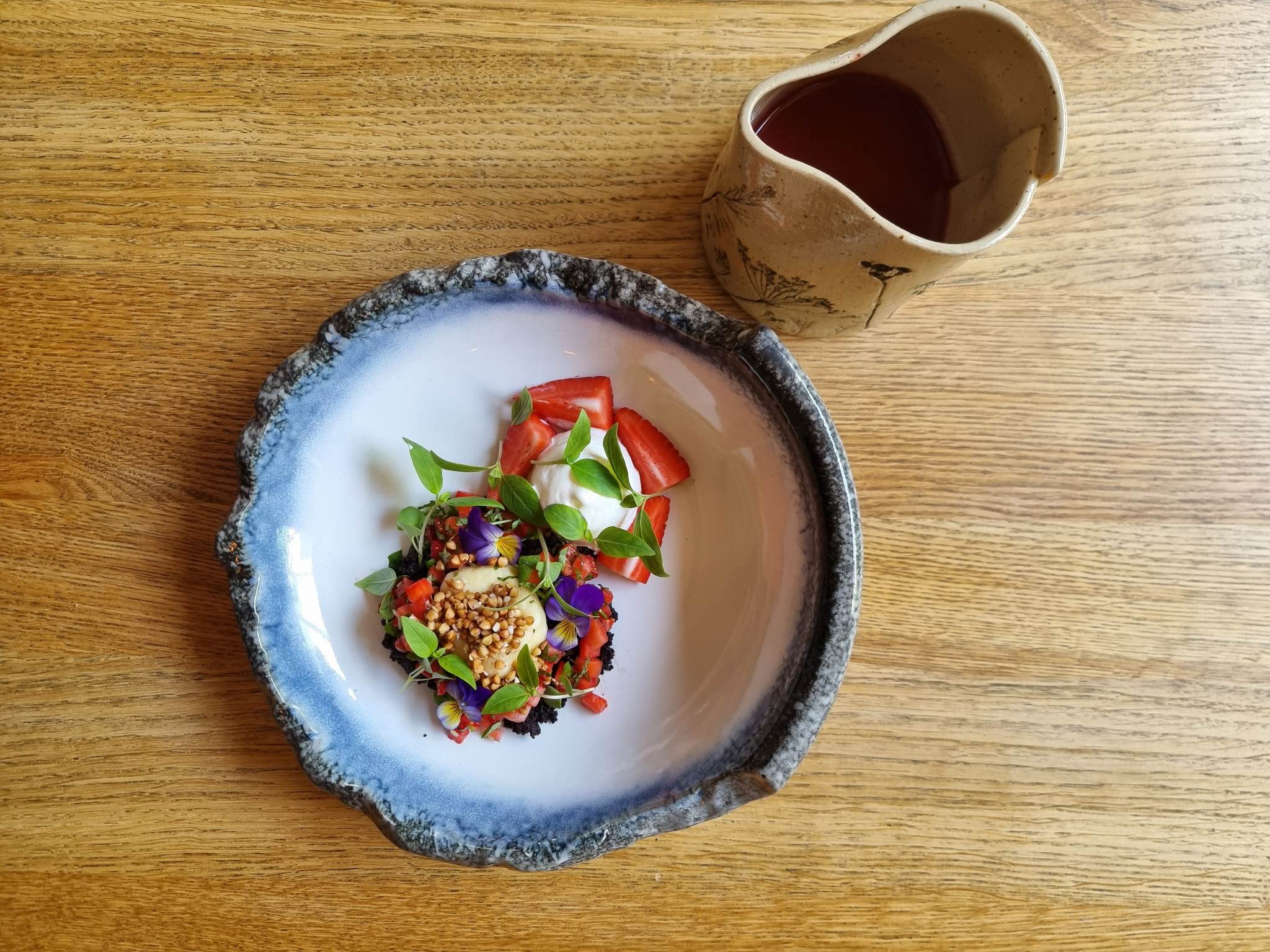A chequered tablecloth sprinkled with gravy dots, breaded meat with potatoes, and a cheerful but firm waiter preferably with a belly—some of the stereotypes that characterize Hungarian restaurants. But if you go to Szentendre and enter Teyföl, you will realize that the gastronomy of our small country is much more playful and cool, if you have the ambition to show it. Stand clear of the closing doors, the suburban railway is about to take you to a fantastic place!
Hungarian cuisine is a blessing and a curse. In the last half a century, it has become greatly distorted, overwhelmed by the triumvirate of salt, pepper, and paprika, the habit of thickening with flour, or the line-up of substantial (heavy) dishes with few ingredients. We are sliding along the axis of stews and breaded meat, while the food products of Goulash Communism (like the widespread use of margarine) just won’t disappear from the public consciousness. Sure, it has its authentic charms, but I like to think that our domestic gastronomy is more than just a few gratuitously stacked dishes—but really, who invented the pork chops Milanese?
In reality, there’s much more to it than that, which becomes clear when you read old recipe books or flip through the writings of András Cserna-Szabó, István Váncsa, or György Dragomán. Or perhaps if you are lucky enough to have a grandmother in the countryside, or some culinary wizard friends.

Even if you don’t have these at hand, there’s no need to mourn, just hop on the HÉV suburban railway and head for Szentendre. Here, Teyföl has recently opened in a small street—quietly at first, to test the waters. But what they created made such a bang that it could be heard from across the Danube, and locals, tourists, and Budapesters alike took immediate notice.
Let’s go back to square one: Brigi Szászfai studied film directing and production in England, then started working as a freelance copywriter, mainly on international projects, also spending some time in Amsterdam. Creativity has always been in her blood, and she has been nurturing some dreams since childhood. One of them was to study screenwriting, and the other is to open a restaurant. Her husband, Bence Póti, was the perfect partner in crime. He had previously worked in the hospitality industry in Iceland and then moved back to Hungary to try his luck as a playlist curator. When they set up in Szentendre two years ago, they were looking for a cozy, relaxed, hip bistro, different from the usual places that lure tourists with checkered tablecloths and big schnitzels or the smell of baking lángos. And good stories usually start with personal motivation, so they embarked on an adventure that was also a kind of escape for them.
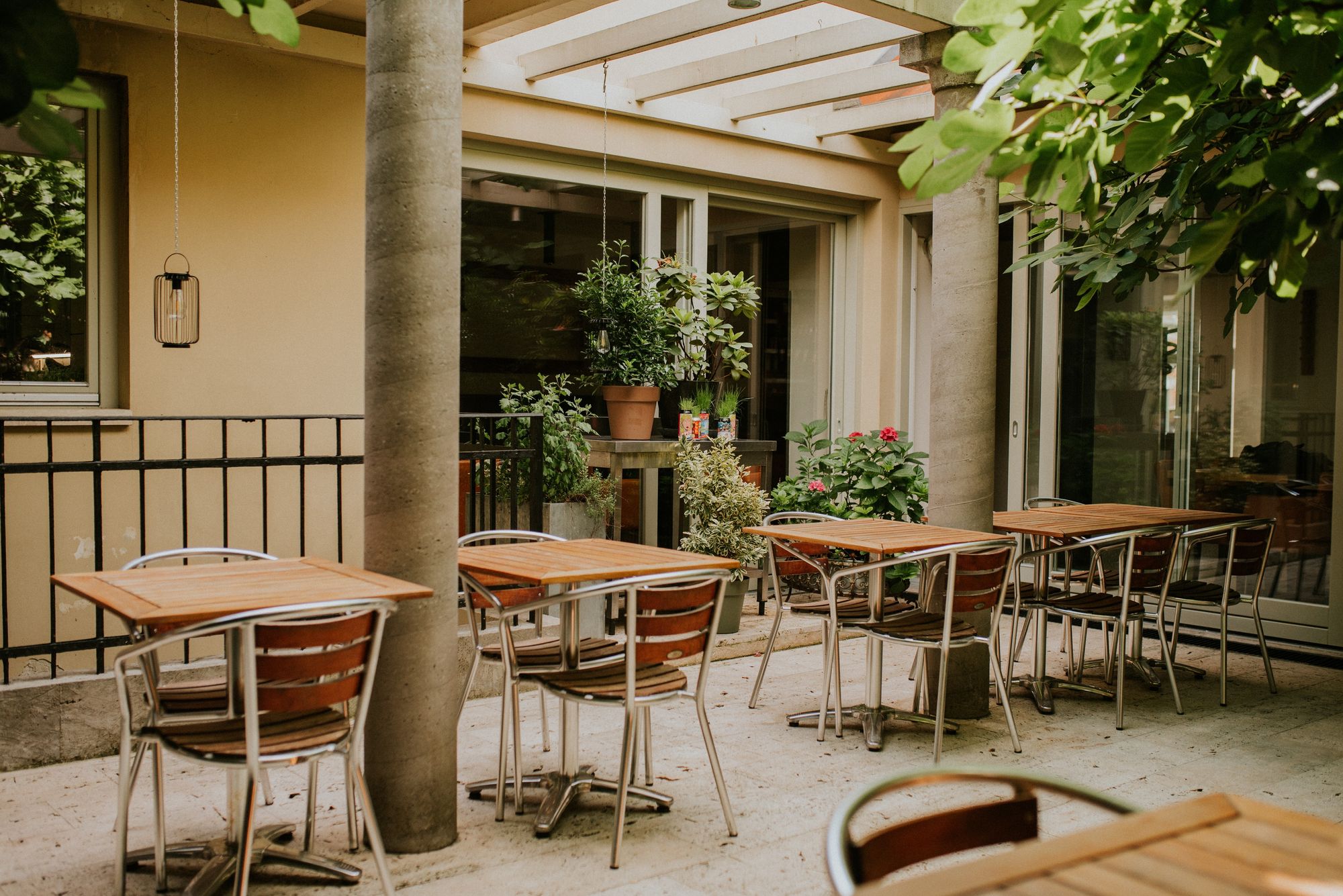
The project was completed in four months on the site of a former Latin American restaurant. They started going through brands and vendors. If they tasted something delicious somewhere, they tried to find the source and build that into their concept. For example, Brigi is a beer fan, she designed Mad Scientist’s first ad campaign 7 years ago, so there was no question of who to partner with, or if they should have their own professional beer tap. As they are very fond of specialty coffees, they asked Casino Mocca and Impresso for support. They didn’t venture too far for organic wines or brandy either, as they wanted the bistro to have a distinct character. Brigi and Bence are huge dog lovers, so they teamed up with the organization Az új kutyád (‘Your New Dog’—the Transl.), which works with the Zemplén Gazdátlan Állataiért Alapítvány (‘Zemplén Foundation for the Care of Homeless Animals’—the Transl.), decorating the walls with painted portraits of dogs in need of forever homes.
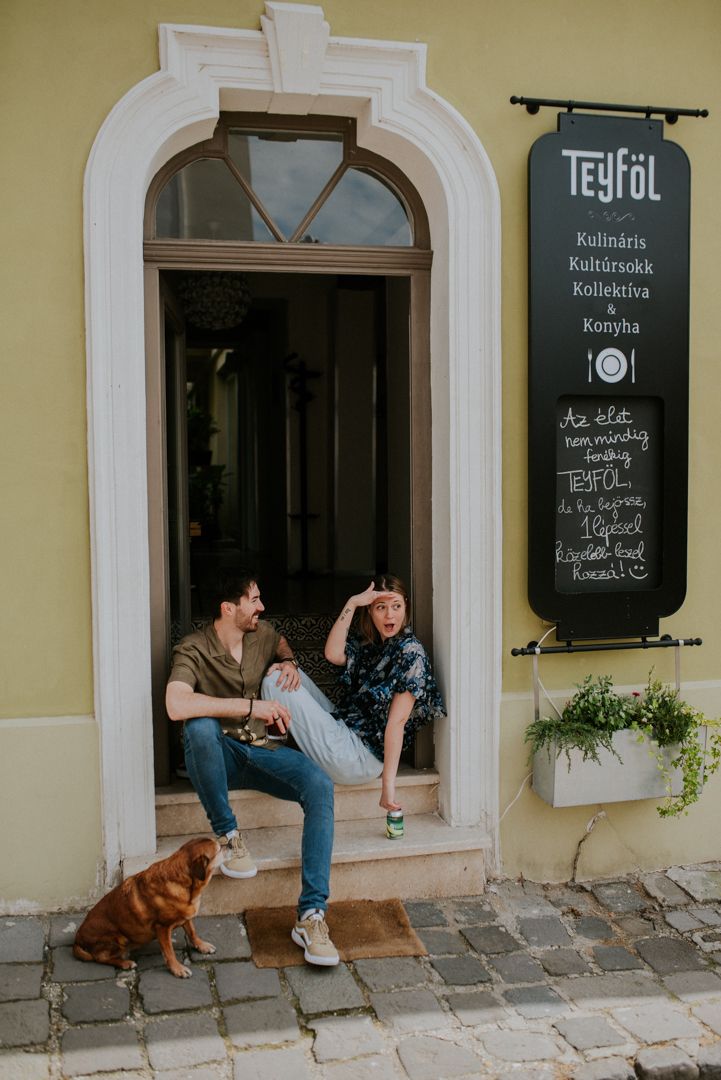


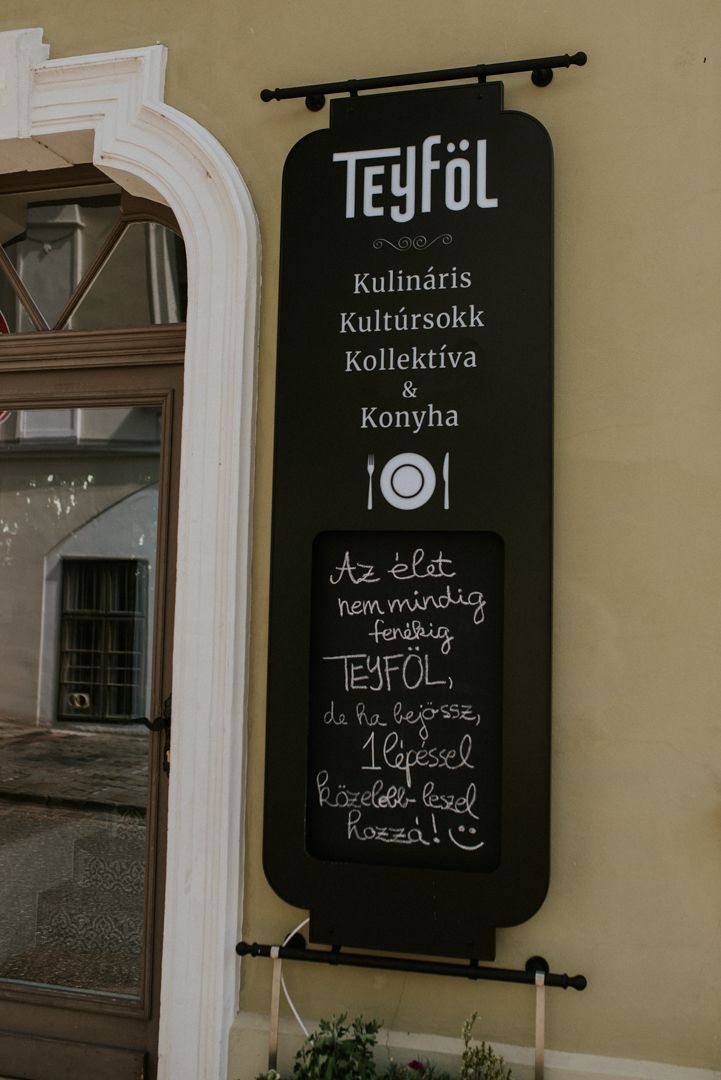
The name of the restaurant is Teyföl (tejföl is a Hungarian variant of sour cream—the Transl.), which has a symbolic layer as well: a spoonful of creaminess, the very soul of our Hungarianness, a little sour, a little sweet, hard to compare or replace with other dairy products. Anyone who has tried to make körözött (liptauer—the Transl.) from crème fraîche or fromage blanc and cottage cheese knows this—they are nice and all, but it’s just not the same. The name needed a twist, a bit of a statement, so the Y was added, which later brought an unexpected turn of events. The only thing missing from the team was a chef with whom they resonated. On the spur of the moment, they posted an Instagram story with a description: instead of a clichéd ad, they wrote a character sketch looking for an innovative chef who “loves to dream up food and dream with food.” Alex Kulcsár, the innovator of the innovation, saw this and immediately sent an emoticon application. The joke was followed by a serious conversation—as Alex was wrapping up an episode of his life in Győr—and the chemistry worked so well that they quickly came to an agreement.

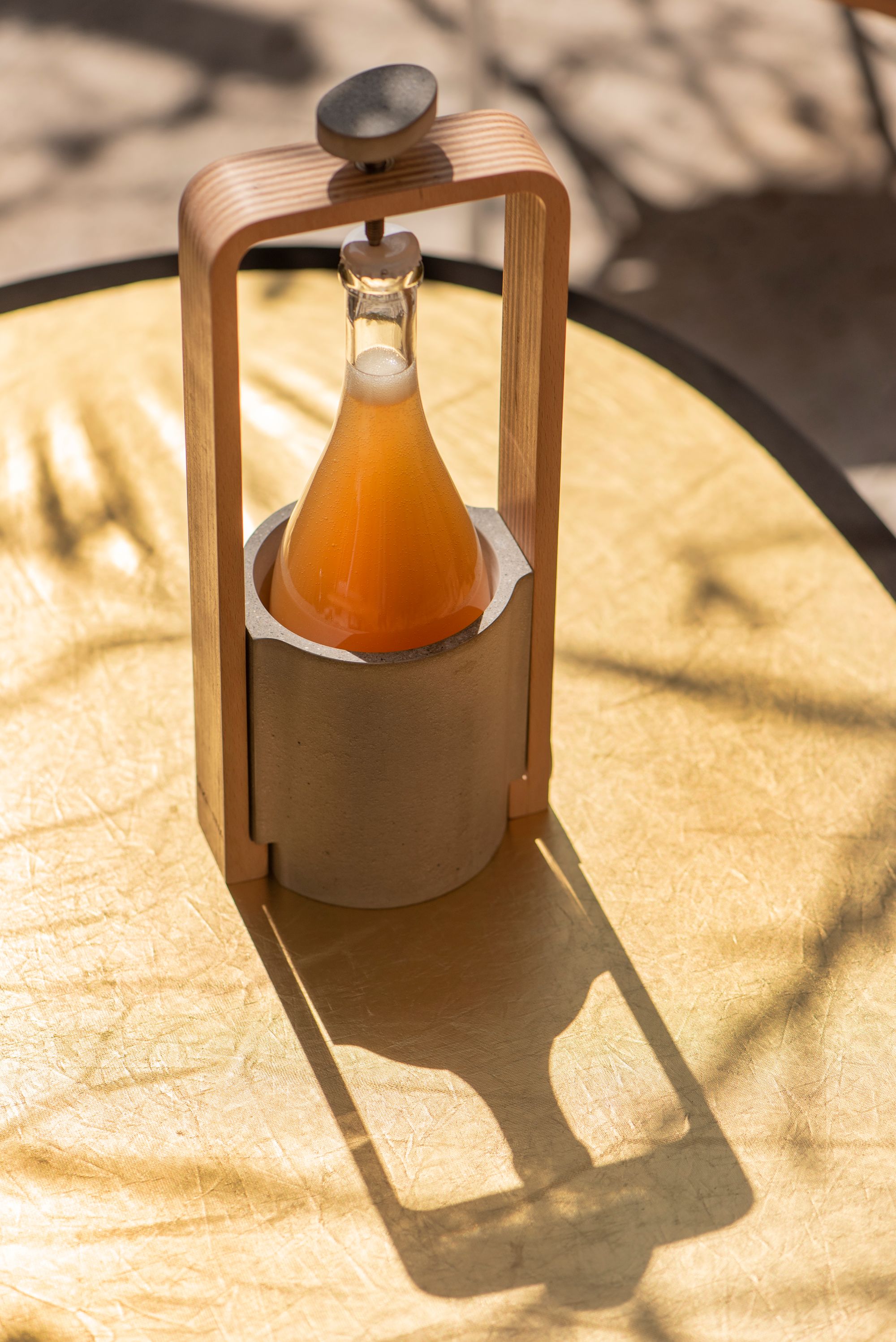
Alex was given a free hand in Teyföl, which he quickly took advantage of. The dishes on the menu are typical cafeteria fare, but more as a nod than in a direct form. There is play and caricature, but also professionalism and thoroughness in everything. In other words, the letter Y. An absolute must is the Máykrémes kenyér (liver paté on bread—the Transl.), where the soft paté arrives on savory potato doughnuts accompanied by some mature cheese, or the Hortobágyi (a savory stuffed pancake—the Transl.), served in brick pastry instead of pancakes. Another dish not to be missed is the broth with glass noodles and buttery beef tenderloin on a plate of perfectly textured diced vegetables. A crowd favorite is the breaded fish with kukoricayancsi (a corny pun referring to an epic poem by Sándor Petőfi—the Transl.), made with trout from Tahitótfalu and five kinds of corn. They come pickled, baked, as a cream, in polenta, and even as popcorn. But even the vegan stuffed peppers are enough to make you smile: grilled sweet and black with buckwheat stuffing, confit potatoes, and tomato water, with celery, fennel, and microgreens. Nothing is self-serving, but everything is experimental, as evidenced by the bi-weekly changing chef’s menu.
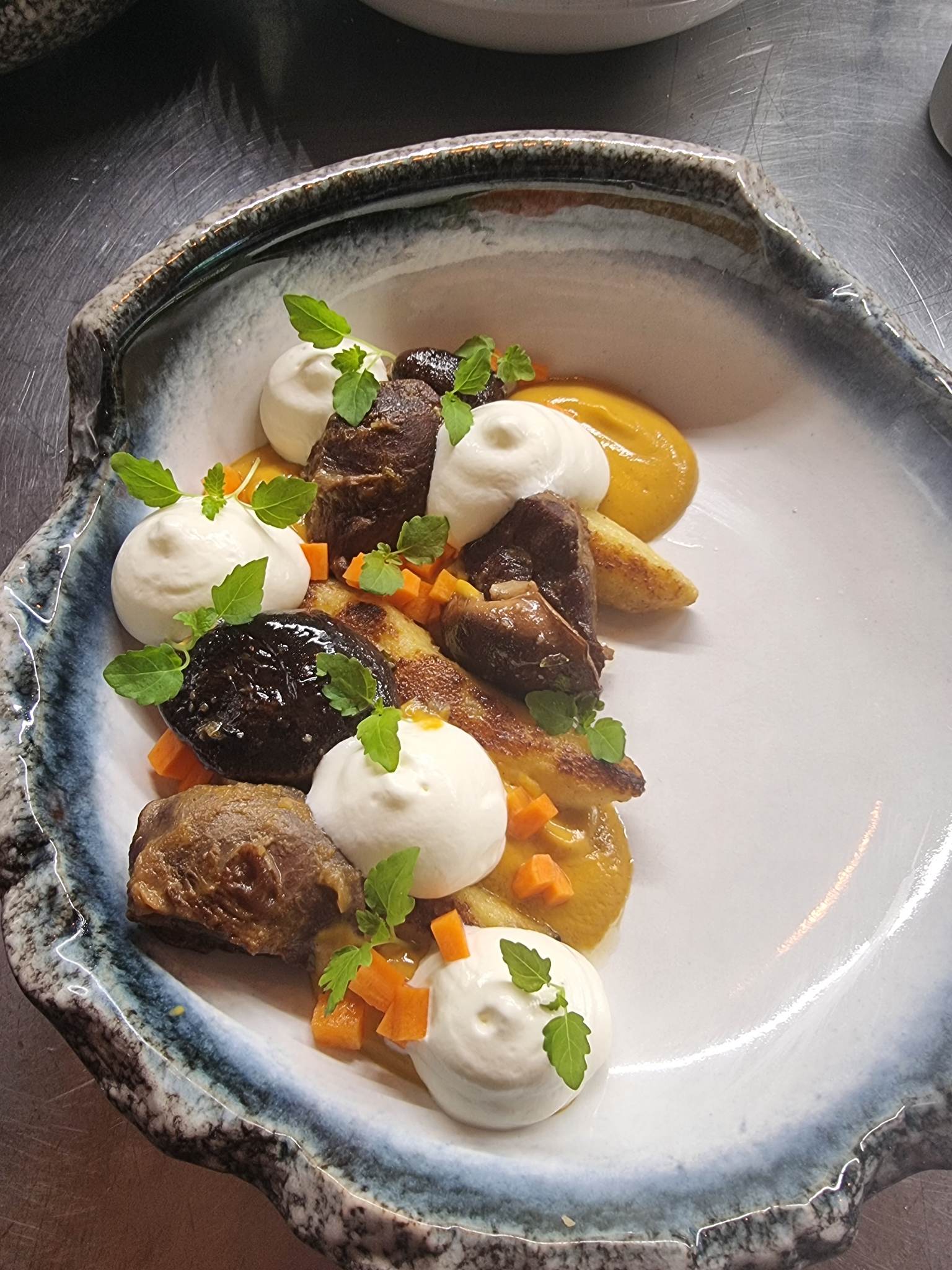
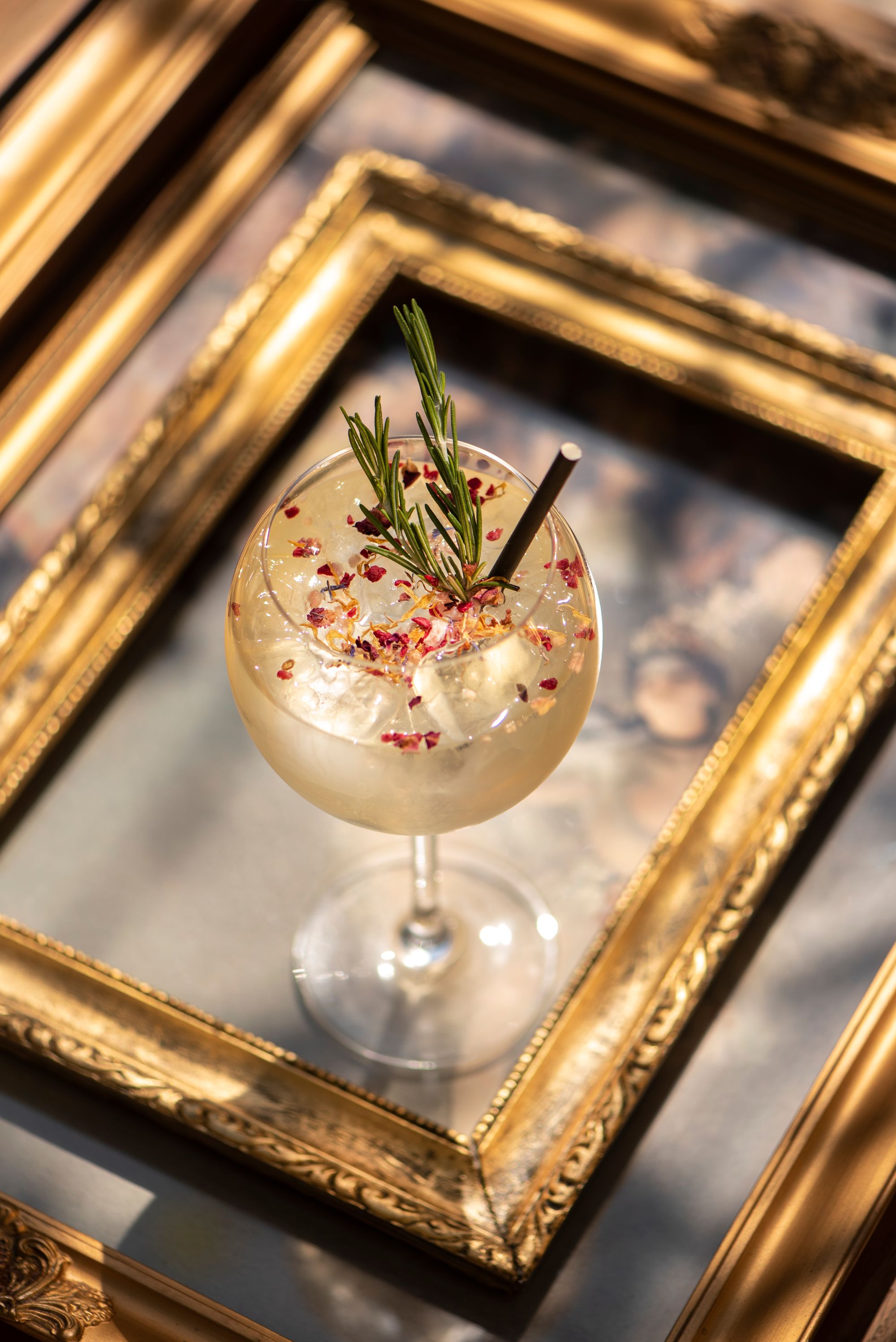
Every dish, the serving itself, and the way it is put on the table is a gag. All of this is somehow free from pathos or theatricality, typical of some overly self-important restaurants, but rather carries a sense of liberty. Perhaps it’s best symbolized by the teybegríz (tejbgríz is a porridge-type pudding made from semolina, cooked with milk—the Transl.): tejbgríz-foam prepared in a thermomixer, with chocolate biscuit crumbs, salted caramel, and cocoa powder. It’s easy to spend hours in total relaxation—guaranteed by Brigi, Bence, Alex, the two– and four-legged team. It’s good that they came, I hope they will stay for a long time, but make sure you visit them soon because you have to try this Teyföl at least once!

David Beckham designed Maseratis—and boy, he did well!

I am constantly trying to break out of my own bubble - interview with Eszter Gózon










